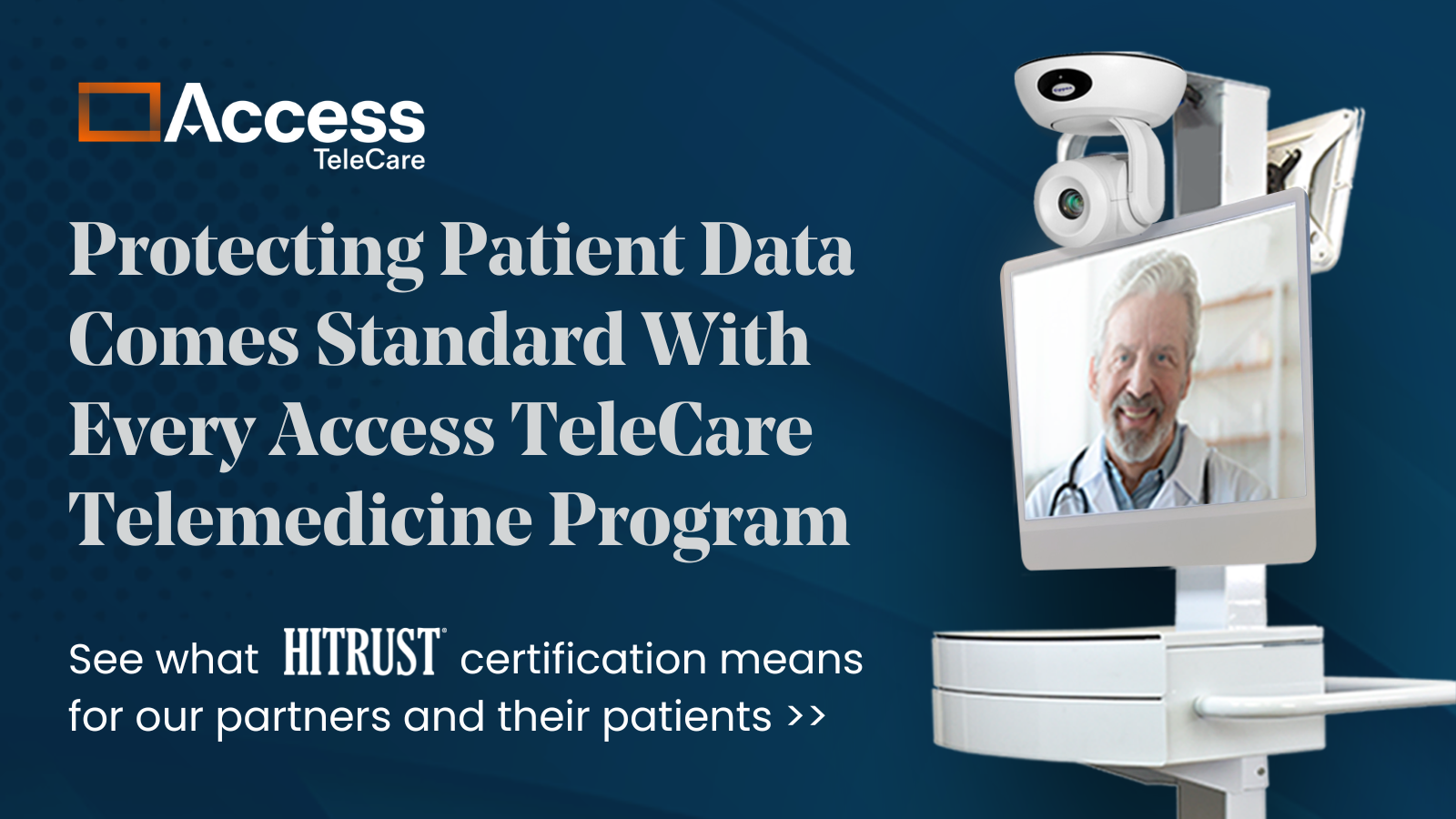By Dr. Jason Hallock
It’s March 2020: millions of businesses and their employees, school systems and their students, and healthcare providers and their patients, are figuring out how to go virtual.
Now imagine for a moment if, in order to accomplish that effectively, we had needed to deliver a large, complicated piece of hardware with a camera and an internet connection to every household in America, and then train the employees, parents, patients, providers, teachers, and students on its proper use.
Thankfully, that wasn’t necessary. When COVID-19 forced millions of us to go remote, web-based software like Zoom and Skype and other ready-to-go collaboration software were able to fill the gap. If Silicon Valley and the forward march of consumer-driven technology have given us anything over the past two decades, surely scalable, easy-to-learn platforms to enable remote working and learning are at the top of the list. Without those technologies, managing the fallout from COVID-19 would have been almost unthinkable.
Now, consider telemedicine. Delivering remote care has been a crucial tool to battle the pandemic, keeping our healthcare providers safe, allowing patients to get remote consults, and helping health systems load balance their workforce to where it’s needed most. But telemedicine has often been dependent on exactly the kind of complicated piece of hardware I asked you to imagine above.
In fact, telemedicine carts have been just one of the major challenges of scaling up telemedicine programs during a pandemic.
Challenge 1: The Supply Chain for Telemedicine Carts
Supply chain issues have permeated nearly every corner of the country’s healthcare challenges over the past six months, and telemedicine is no exception.
One of the many questions the team at SOC asked when COVID hit was, “How is this going to affect our supply chain?” Primarily, that meant carts. We looked at how many we had in inventory—was it enough to support the current business we knew was coming online at the time? As the coronavirus progressed, some health systems delayed implementations, but others signed up or accelerated their implementations.
Early in the pandemic, anticipating the possibility of supply chain disruptions, we put in an order for additional carts. But eventually, we ran into the same challenge as myriad other parts of the healthcare industry: the things we needed were manufactured in China—and that meant delays.
Thankfully, the SOC telemedicine platform was designed from the beginning to be device agnostic. Ultimately, our software can be run on any tablet or laptop, just as it can be run on just about any telemedicine cart or other hardware that already exists in the hospital. We have successfully implemented physician services in critical care departments of multiple hospitals within 72 hours because of our technical and implementation flexibility.
This low code device-agnostic approach to technology has been a crucially important strength. It meant we could reuse or re-purpose existing carts which were under-utilized. And, it meant we could implement a telemedicine solution using lighter technology, such as a PC with a webcam or a readily available tablet.
Challenge 2: Training and Travel Restrictions
Obviously for a telemedicine company, we had a more natural time adapting to a completely remote work environment than other industries. But there was a crucial part of our business that was normally conducted in-person: training.
In normal times, pre-COVID, our implementation teams would travel to our partner hospitals to be on-site. They would set up the technology, make sure the software was configured correctly, work with the hospital’s in-house IT teams to iron out any glitches, and help train nurses and techs on how to use the technology.
But like everyone in America, our implementation teams were subject to new travel restrictions. And even more definitively, our hospital partners themselves were no longer allowing any third parties into the building. Travel was out.
But training was still in—we just had to do it remotely.
Of course, ideally you have someone sitting in a chair next to you while learning a new piece of software or technology. But as a telemedicine company, we were perhaps more ready and naturally able to deliver this support remotely than businesses used to doing everything in person.
Our training and implementation teams transitioned to remote, and we began to revise our playbook to ensure that all the small details of an implementation were addressed and overcome in this new virtual environment.
Challenge 3: Silos, Backlogs, & Hospitals under Duress
There’s no doubt that COVID has been an enormous challenge for hospitals and health systems. Even in normal times, every department deals with a hospital’s natural silos, and every department has a persistent backlog of work. Ongoing mission-critical diversions are a fact of life in healthcare.
Ask your average hospital IT department what their inventory of current and upcoming project requests looks like and you’ll get a list that is over a year long. Meanwhile, hospitals around the country have dealt with severe financial pressures, and continue to do so. In areas where elective procedures are starting to come back, there’s now a backlog of those.
Implementing big new programs in such an environment isn’t easy.
At SOC, we assign every implementation a dedicated project manager. In addition, we also identify and ensure that there is a dedicated in-house resource who is committed to meeting a clear timeline. Hospitals always have their silos, but the right project manager—often a VP of Operations—can navigate those silos and marshal the resources needed to get telemedicine up and running smoothly.
Medical Muscle Memory
It’s no secret telemedicine has exploded over the past six months. And the more implementations we do, the more we develop a kind of medical muscle memory for what works and how to make sure they roll out effectively.
And while it’s at least partially true that no plan survives first contact with the enemy, SOC’s underlying strengths—our technology platform, our people, and our process for implementation — have served us, our partners, and our patients well, even as the entire healthcare system shifts under our feet.
****
If you would like to understand how your hospital could benefit from a rapid implementation of telemedicine, please contact us for a working session with our experts.







